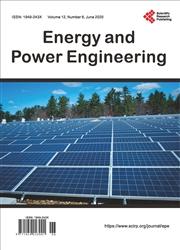Construction Technology of Biodigesters in Senegal
引用次数: 0
Abstract
Faced with the depletion of fossil energy resources and given the current context of the fight against climate change, Renewable Energies (RE) represent an increasingly growing challenge. Of all these energies, those resulting from the biomethanization of biomass now provide an opportunity in the world of farmers and breeders. The treatment of agro-pastoral residues by anaerobic digestion has been the subject of renewed interest in recent years, thanks in particular to the production of energy from biomass, not to mention the production of fertilizers from effluents. Expelled from the digesters. This method of transformation offers many environmental, socio-economic and agricultural interests. Indeed, the biogas obtained from organic matter allows, among other things, to cook, light houses, and produce electricity and heat. The objective of this study is to compare the construction techniques and costs of the biodigester models that exist in Senegal. There are many biodigesters, the choice of an installation depends on the available space and the nature of the soil. Several types of biodigester technologies are installed in Senegal. The GGC 2047 fixed dome, the RMB geomembrane and the BEG geomembrane. First we will describe the construction techniques of the modified GGC model fixed dome biodigester, then of the RMB model geomembrane and finally of the BEG model geomembrane.塞内加尔沼气池建设技术
面对化石能源资源的枯竭和当前应对气候变化的背景,可再生能源(RE)代表着越来越大的挑战。在所有这些能源中,由生物质生物甲烷化产生的能源现在为农民和饲养者提供了一个机会。近年来,通过厌氧消化处理农牧业残留物已重新引起人们的兴趣,特别是由于从生物质中生产能源,更不用说从废水中生产肥料了。从消化器中排出。这种转变方法提供了许多环境、社会经济和农业利益。事实上,从有机物质中获得的沼气可以用于烹饪、照明、发电和供热。本研究的目的是比较塞内加尔存在的生物消化池模型的建设技术和成本。有许多生物沼气池,安装的选择取决于可用的空间和土壤的性质。塞内加尔安装了几种类型的生物消化池技术。ggc2047固定圆顶、RMB土工膜和BEG土工膜。首先介绍了改良的GGC模型固定式圆顶生物消化池的施工技术,然后介绍了RMB模型土工膜的施工技术,最后介绍了BEG模型土工膜的施工技术。
本文章由计算机程序翻译,如有差异,请以英文原文为准。
求助全文
约1分钟内获得全文
求助全文

 求助内容:
求助内容: 应助结果提醒方式:
应助结果提醒方式:


